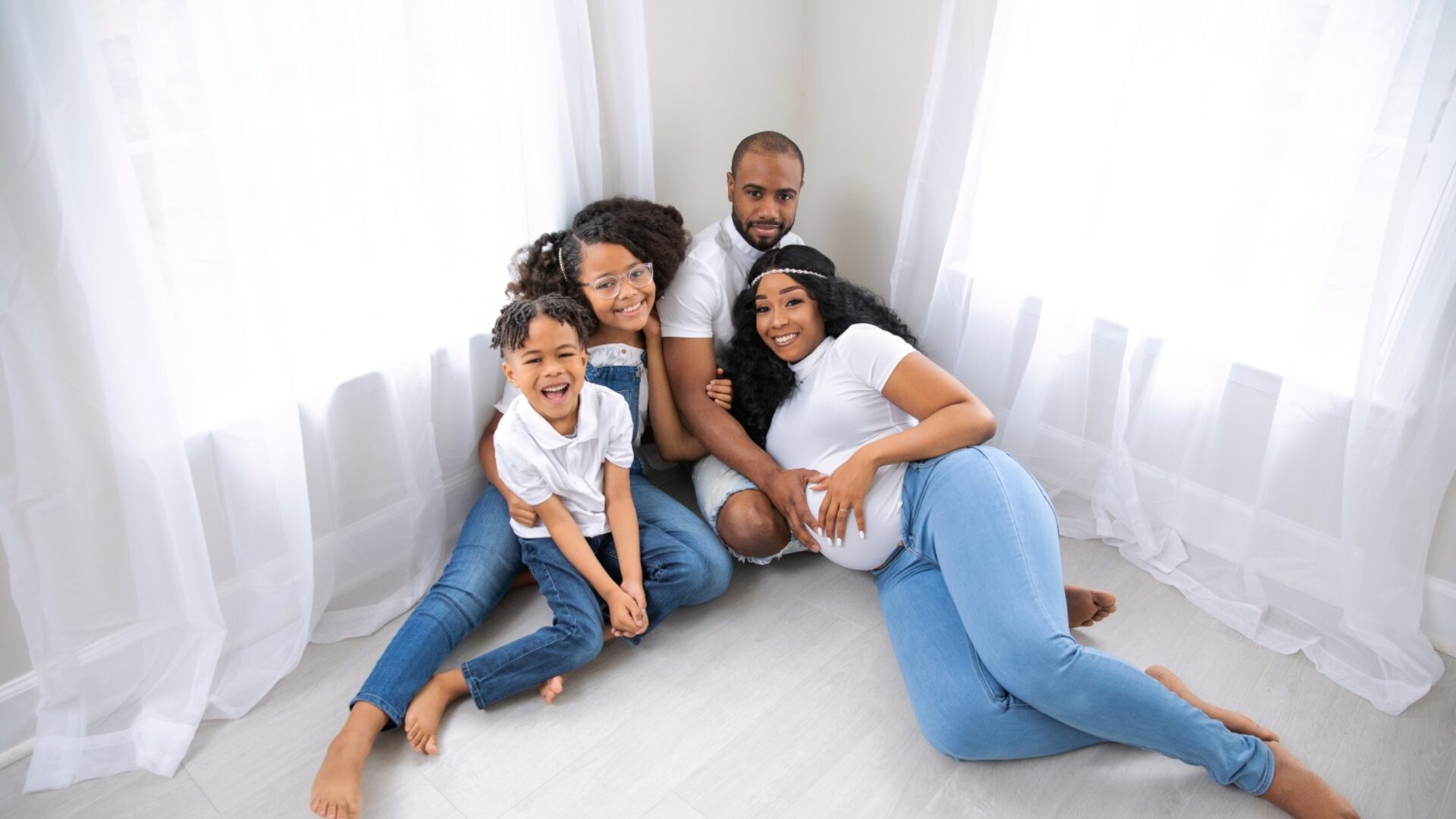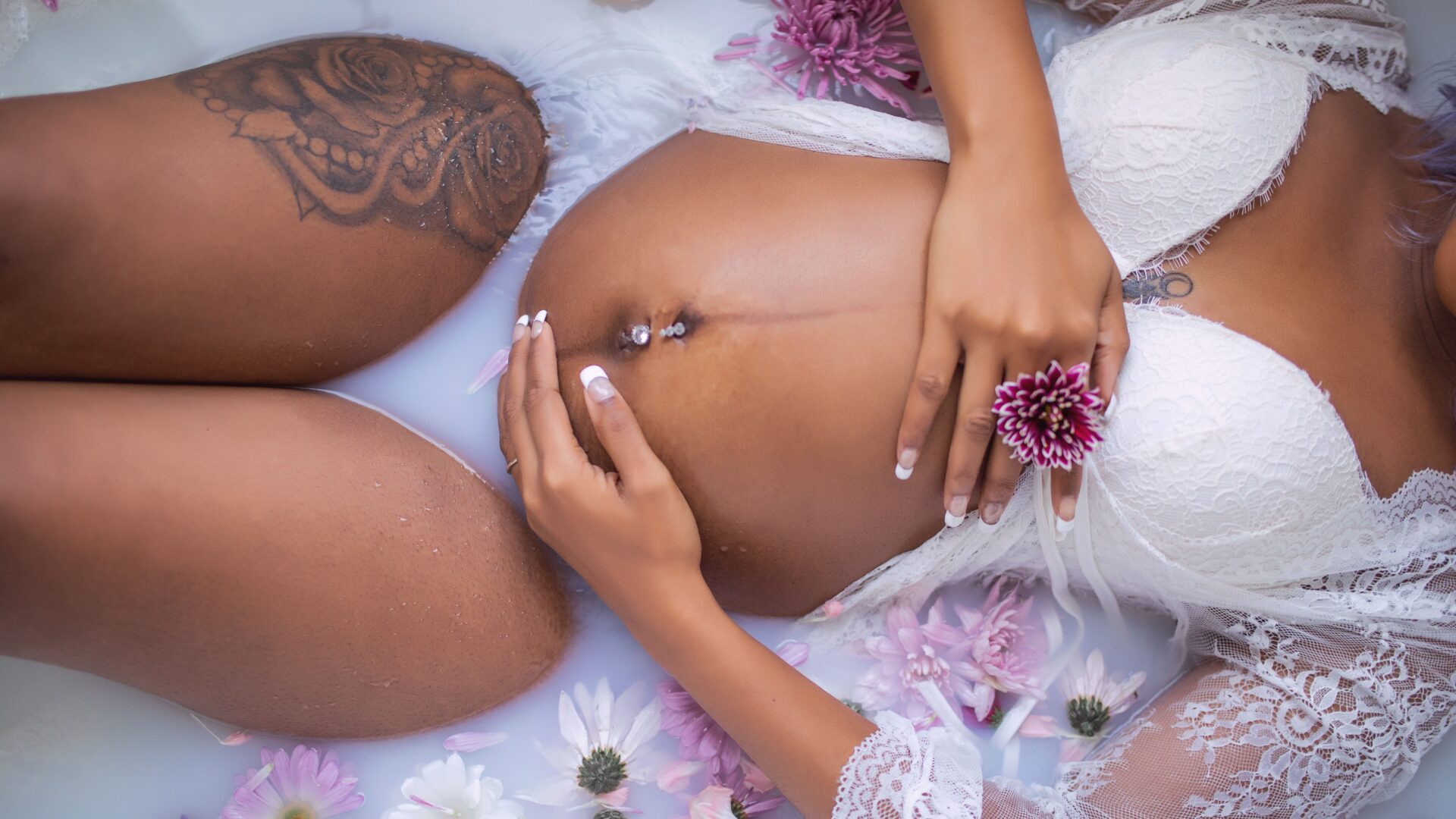
Young Black mothers are taking their maternal health journeys into their own hands. According to the CDC, Black women were 69.9 deaths per 100,000 live births, 2.6 times more than the rate for white women. America has one of the highest costs of birth as well as the highest rate of maternal births in the developed world. Mothers of all kinds are looking for additional birthing avenues and leaving mainstream hospitals altogether. Dr. Nicole Calloway Rankins, a medical doctor who also hosts a podcast about pregnancy and maternal health, says women are leaving the mainstream hospital system for several reasons, but mostly fear.
“Fear of mistreatment, fear of not being listened to, a desire for more control, a desire to limit interventions, or wanting to be in a more familiar environment are all reasons people want to get away from mainstream healthcare,” Rankins tells GU. “These concerns are all valid and rooted in people’s real experiences. These things happen far more than they should in the US maternal healthcare system.”
Influencer and mother of three Erica Grit is well-versed in interactions regarding the health care system. “I had my first baby, really young,” Grit says. “I wasn’t sure what was going on, and I didn’t know how to advocate for myself. I felt ignored as a new mom. No one was telling me anything.”
This experience isn’t uncommon among mothers, especially mothers of color. Hospitals were the norm for Grit, and, like many, she was taught that option would be best for her and her baby. That was until the beginning of the COVID-19 pandemic. Grit had not given much thought to having an alternative labor experience. Still, the prospect of not being able to have her partner there with her during birth, coupled with the concern for her and her baby’s health, delivering in a hospital filled with sick people, made the decision easier.

Photo Courtesy of Erica Grit
After hearing from her sister and doing her research, she and her family decided to choose a home birth and employed the services of a midwife to assist with the process. “My husband and I had put money aside to give birth. We initially budgeted for a hospital birth, which could run us up to $10,000 depending on what happens,” Grit says. “America is one of the most expensive places to give birth. I was shocked that our midwife charged a flat fee of $4,000 at the time.”
According to the National Library of Medicine, home births decreased in the United States from 1990 through 2004, overshadowed by hospital labor experiences as the predominant cultural norm. That trend reversed in the early 2000s; by 2015, the United States had the most significant number of home births among industrialized countries. By 2017, 1 in 62 births occurred outside of hospitals. “The home birth was the most empowering experience I’ve ever had,” Grit says. “What I loved most was that my husband played an integral role in the birthing process, and a loving family surrounded me in the comfort of my home.”
The conversation around midwives is more controversial than expected, and the rivalry between doctors and midwives almost spans a century. Midwives primarily use two methods of assisting births. Like Grit’s experience, they would come to homes and carry out home births or be stationed at labor centers, which are like a hybrid between home and hospital deliveries.
The medical opinions are split down the middle, with some doctors and organizations being okay with home and water births for typical low-risk pregnancies, and others, typically a minority, are vehemently opposed to any birth outside of a traditional hospital and clinic. “Birth centers and home births are safe and reasonable options for low-risk women when attended by a trained professional and with a good backup plan in place if hospital transfer is needed,” Rankin says. “Low risk means no major health problems like diabetes, no serious conditions have developed during pregnancy like preeclampsia, only one baby in the head-down position, and no prior cesarean birth.”
With the steady rise of birthing centers, mothers weary of home births have a comfortable alternative. According to the American Association of Birth Centers, over the past 40 years, the number of birth centers in the United States has grown to more than 400 as of 2021. From 2011-2021, the annual number of births rose by 65 percent, showing that birth centers are here to stay and expected to have a steady upward trend with people who choose to give birth. As a result of the sudden popularity of birth centers, there is a whole new market to fill. Sthembiso Nsele, a midwife who works out of a high-end birthing center in the affluent neighborhood of Rosebank, notices an influx of young mothers participating in alternative labor experiences.
“Our moms come to us for a safe and calm experience,” Sthembiso says. “The moms look for a luxury element in birth and recovery.” A typical suit in Sthembiso’s birthing center looks more like a five-star hotel than a place to give birth, complete with a king-size bed, plush linens, a private bathroom, and exquisite art on the walls. The rise in alternative labor methods is thanks partly to social media, where a community of mothers has shared their experiences with home, unmedicated labor, water, and centers. This has piqued the interest of first-time mothers and swayed the opinions of mothers who have had hospital births.
While Sthembiso’s birthing center is located in Rosebank, South Africa, there has been a steady trickle of foreign patients, some of whom have relocated to South Africa, and others chose to have their births outside the United States. The average price of a birthing center in the United States is around $7,000. The average cost of childbearing in a hospital can be up to $18,000; this luxury center in South Africa is R40,000 ($2,000). This pricing seems like a bargain to those from developed nations.
A 26-year-old who wanted to remain anonymous is among the hundreds of Westerners who have opted out of the American Healthcare System. Her husband is South African, and they made America their home for years. While her husband’s new job requires them to travel between the States and South Africa, when Zillennial fell pregnant, it was assumed that she would have her delivery in America. Still, she changed her mind.
“Almost every person I know, Black or white, has a hospital horror story from America,” she told GU. “My mother-in-law convinced me to stay and give birth here [in South Africa] so she could help with the baby. I had a water birth at a birthing center and stayed four days postpartum for just under $3,000.”
While this Gen Z’ers anecdote is not isolated, there has been a steady uptick in tourism, where wealthy and middle-class Americans leave America to give birth in different countries for passports or the comfort and luxury they can’t receive in America. The world is constantly changing, and the hospital system has much catching up to do, but until then, the growth in alternative practices is essentially inevitable.
About the Author: Gugulethu Khumalo is a freelance writer concerned with all aspects of the Black femme experience. She’s written for publications such as Gal-dem, Chapter-Z, Screenshot, and Hype- Q.